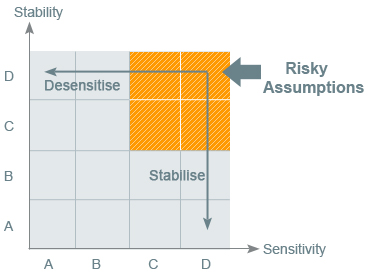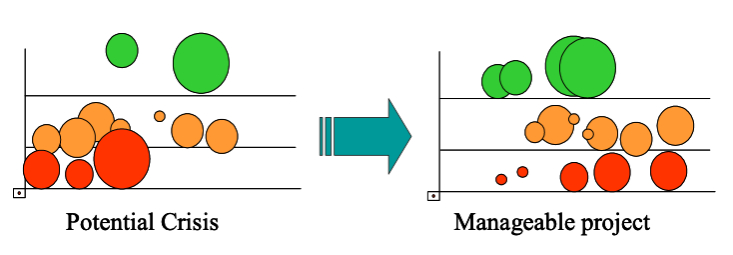How to identify risky assumptions efficiently
The core of SDA is SAA. This uses structured techniques to analyse plans and efficiently capture the knowledge in the team’s heads and therefore identify the most sensitive assumptions that are potentially unstable, and therefore the source of greatest risk.
A rapid, light touch way of identifying key risks
An increasing shift towards hybrid and remote working – together with a requirement for faster insights – calls for an ultra-efficient approach to risk analysis, and SAA provides this. Find out more here.
Programme leadership can rely on SAA to:
- Shine a spotlight on the key risks, many of which will not have been identified to date
- Unblock time or budget challenges; a focus on the strategic assumptions can help highlight critical pinch points, leading to pro-active risk management or opportunities to do things faster
- Ensure that all stakeholders are on the same page

Everything is rated on an ABCD scale; where A is always good and D is always bad. This provides an instantly understood assessment on each assumption, forces people to express their feelings (ie there is no “medium”) and effectively provides guidance on how best to attack the risk (i.e. stabilise the assumption or de-sensitise the project to the effects of the assumption going wrong).
Risks (ie “Risky Assumptions”) are therefore identified through individual assessment of Sensitivity and Stability. However, further risky assumptions are identified by cross-communicating the non-risky assumptions to other stakeholders. In this way, critical risks that would never have been identified by traditional methods are captured and mitigated.
The risky assumptions identified are reprioritised to provide simple but rigorous summary risk profiles that senior management can quickly assimilate and provide an accurate prioritised picture of the project’s exposure to risk.
The effect of applying SAA

